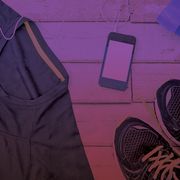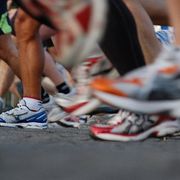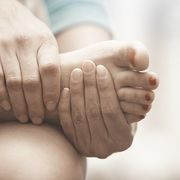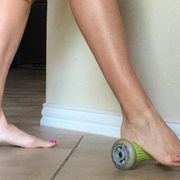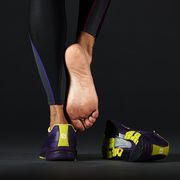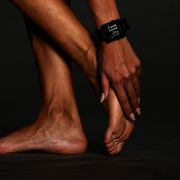Michelle Lilienthal of Team Minnesota USA, who ran her marathon best of 2:35:51 for fourth place at Twin Cities in 2006, plans to run the AT&T Austin Half Marathon on February 17. Lilienthal, 25, had run a 2:40:23 at Boston in 2006. In 2007, she was third in the USA 25-K in 1:29:53 and third in the USA Half Marathon in 1:12:46, behind Elva Dryer and Kate O'Neill. In high school in Iowa, she set a state record in the 3,000-meter run, was a seven-time state titleist in track and cross country, and placed sixth at the Foot Locker National Cross Country Championships in 1999. She went on to star at the University of Wisconsin and then earned a masters in Higher Education Administration at Drexel University in Philadelphia. Lilienthal was also an assistant in the sports information office at Drexel. Her marathon debut was a 2:49:22 in Philadelphia in 2005.
We'd heard that you had originally planned to go back to Houston on January 13 for the USA Half Marathon but were sick and are now planning on going to Austin for the half marathon on February 17 instead. Can you talk about that?
Michelle Lilienthal: I was in the midst of doing a bunch of 90 and 95-mile weeks. For me, that's a ton. I was feeling pretty "not fresh" to race well, so I just decided it might be better to wait until the cycle of my training was a little more "race ready" for my legs. We decided to wait to do Austin. I'm actually down in Austin right now training with my teammate Mandi (Zemba). But my foot has flared up again. I had a long bout of plantar fasciitis last fall, and I did a 26-mile long run a couple of weeks ago, and ever since then it's been a little tender. So I'm even re-evaluating whether I'm going to do Austin now.
What were you able to do today (Tuesday), for example?
ML: Today, I did a bunch of cross-training. I biked for two hours and then I just did a short run this afternoon, four miles. I'm seeing a couple of doctors here tomorrow. Things are kind of up in the air right now.
In your development as a marathoner, you went from 2:49 to 2:40 to your 2:35. You anticipate a certain amount of improvement each time, but you can't run a 2:35 marathon unless you say to yourself "I'm going to run the first half in 1:17 or 1:18." You have to be ready and have that goal in mind. Your progress is rewarding and maybe a little surprising, but you must have felt you were capable of 2:40 in Boston and then capable of 2:35 in Twin Cities.
ML: In Twin Cities, I definitely knew I was capable of running that well. My coaches were reassuring me that I was. I don't know that I was really confident that I would be able to run those times. In Boston, I was just shooting to break 2:47 (and thus qualifying for the Olympic Trials), and in Twin Cities, I was shooting to break 2:39 (the "A" standard). I guess both times, I kind of surprised myself, but my coaches were telling me for Boston that I should definitely be able to run under 2:42 and I was like "no way, not a chance." When I ran 2:40 in Boston, that was actually a huge surprise. The 2:35, I knew I was ready to run that. I knew that my workouts were going much better than they were before Boston.
Who was coaching you for Boston?
ML: My two coaches from high school, Steve Sherwood and Tom Mittman.
So after a 2:35, your expectations and sense of where you fit in this sport change. You look at the fact that other than Deena Kastor, there hasn't been anything really exceptional done by women in the marathon in this country recently. A 2:35 makes you a legitimate Trials contender, doesn't it?
ML: Yeah. It took me a while to accept it. For a while, I was kind of in awe - how can I really be a contender to be making the team? It took me a long time to get used to that. It's pretty cool knowing that it's kind of a wide open (Trials) race. I guess it's a little nerve-wracking knowing that anything can happen, but it gives those runners that are in the hunt and could be outside contenders a little more hope and something to look forward to.
And this whole idea of being a professional runner is new to you, isn't it?
ML: Yes. I guess I didn't really realize at the time the difference between 2:40 and 2:35. I just thought they were both really good (laughs). When I ran 2:35, my coaches both said "you know, you're the real deal now." They had to pump that into my head for a while before I really believed it.
When you started thinking about professional running, did you start seeking out teams, or did Team USA Minnesota come to you?
ML: I ran the 25-K Championships in May, which were in Grand Rapids. Katie McGregor was my roommate. At that point I wasn't interested in moving anywhere (from Philadelphia) or joining a team. But Katie sparked my interest. She was talking about it, and I was asking her questions- what the group was like. She likes the set-up and the city (Minneapolis) and the area. She was speaking very highly of the whole situation. She said they were looking to add a couple more girls anyway and I should come visit if I was interested. Then Pat Goodwin sent me a bunch of information on the team later that week. I wasn't even convinced that I wanted to move anywhere because I really liked Philadelphia and training there was going fine. But when I visited, I really liked Dennis (Barker, the coach) and I really liked the team and Minneapolis is a bit more runner-friendly than Philadelphia, so I figured if I really wanted to be serious about the Trials and my running, it probably would be a pretty good move for me to make.
In what way is Minneapolis more runner-friendly than Philadelphia?
ML: There are just a lot more places to run. In Philadelphia, there's one really good path downtown that I ran on, out and back, every day, and I didn't mind it because I'm a creature of habit. That's fine for me, I actually really enjoyed that route. But in Minneapolis, there are a lot more trails and places to run, and in the winter they're really good about plowing the paths around the lakes and the rivers. And you see more runners in Minneapolis.
Does it surprise you how much harder Team Minnesota USA works than you were used to working on your own?
ML: Umm. (Pauses). No. I don't notice any difference really. But everyone works really hard, and it's everyone's main focus and everyone's main job, I guess. So in that sense, it's different for me, because I was just doing it in the morning and fitting in before work and school. Even though it was a big part of my life and my daily routine, it took up a lot less time than it does now. But I was just as committed when I was on my own doing it as I am now.
How did you react when you found out that your teammate Katie McGregor, who'd done a 2:32 marathon, didn't want to do the Olympic Marathon Trials (McGregor will focus on making the U.S. team in the 10,000)?
ML: Well, I knew all along she wasn't going to do the Marathon Trials. I think we had talked about that at the 25-K, so I had known since then. She's such a good runner and such a good competitor; of course, I was selfishly a little happy that I could take her out of the (Trials) equation.
How have you adjusted to having to train for a marathon in the cold winter months in Minnesota?
ML: It's been a big adjustment. The winters in Philadelphia weren't nearly as brutal as they are in Minneapolis. I've guess I've really gotten used to treadmill running, which I used to hate. I've had to really learn to focus on a treadmill, which I guess is a good thing. I've done a bunch of long runs on treadmills, and that's not even because of weather. Dennis just likes us to them in training for a marathon so we can have our fluids there so we can drink every 15 minutes. Just being tough in the cold has been a big adjustment. In college, Madison (Wisconsin) was pretty brutal running outside, but it's just so frigid cold up here, you just have to wear a lot of clothes and put a lot of Vaseline on your face. Worse than the cold is dealing with the bad footing. If it snowed one day and was warm and melted and froze the next morning, if it's icy or there's too much snow, then we will go inside or go on the treadmill. You're constantly checking outside and figuring what's the best venue for working out. You have to be really flexible.
You were working in sports information at Drexel before going to Minnesota. Is that what you'll be interested in doing in the future?
ML: I'm not sure. I really liked sports information, but while running, it was a little intense, because I had a lot of night and weekend hours to cover sporting events. Luckily, my boss was great and a runner and he let me go out for runs and workouts whenever I needed to get them in before a game. I like being in the university setting and being in athletics in a university setting is pretty ideal. I like the camaraderie and team aspect of it. I think eventually, I would love to be in administration within an athletic department.
Well, we hope you heal and can get your plantar fascia problem under control.
ML: It's frustrating and it's really bad timing right now. Luckily I'm young and I've got another couple of Olympic rounds in me. That's the only thing that's keeping me sane right now, knowing that even if my race in April isn't as good as I'm looking for, it's alright. My best chances are probably in the next couple of rounds.
Michelle Lilienthal
This young athlete from Team USA Minnesota talks about training with her new team, battling plantar fasciitis, and preparing for the marathon trails.

Watch Next

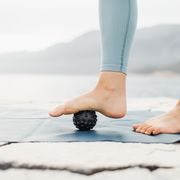
What You Need to Know About Plantar Fasciitis
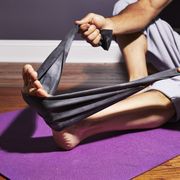
Beating Plantar Fasciitis: What Works Fastest?
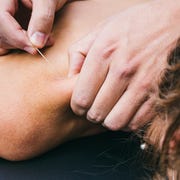
Cutting-Edge Pain Therapies: Dry Needling

How to Use Kinesio Tape to Deal With Injuries
Advertisement - Continue Reading Below
Advertisement - Continue Reading Below


